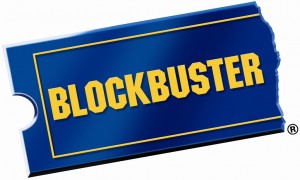Beware The Dark Side of Achievement
Success. Results. Winning. Profit. Growth. All of these terms are synonyms that describe the value of Achievement.
Achievement = successful performance; accomplishment; obtaining by exertion.
Who doesn’t like the feeling that comes with achieving a goal? For most people, it even produces a natural “high”. The need to achieve can even be addictive.
 But achievement can create a serious problem: believing you can continue achieving by following the same processes or behaviors.
But achievement can create a serious problem: believing you can continue achieving by following the same processes or behaviors.
This is the dark side of achievement.
In addition, multiple achievements can produce the belief that the next goal will be somehow easier to achieve. This is particularly evident in businesses that experience consistent growth and/or profit year-over-year. The leaders somehow expect to achieve the next year’s goals easier than the past year – following the same processes or behaviors that worked before.
This is what happened to Blockbuster, an American-based provider of home movie and video game rental services.
The Blockbuster Story
 From its humble beginnings of opening one store in Dallas, TX in 1985, the video-rental chain grew to become a hugely successful business globally, even surviving the major transition from VHS to DVD. At its peak in 2004, Blockbuster employed nearly 60,000 people in more than 9,000 stores across 25 countries. That year, they generated total revenues of $6.1 billion and gross profit of $3.6 billion.
From its humble beginnings of opening one store in Dallas, TX in 1985, the video-rental chain grew to become a hugely successful business globally, even surviving the major transition from VHS to DVD. At its peak in 2004, Blockbuster employed nearly 60,000 people in more than 9,000 stores across 25 countries. That year, they generated total revenues of $6.1 billion and gross profit of $3.6 billion.
By all accounts, Blockbuster embodied the value of achievement.
Yet, by 2010 the company was filing for bankruptcy. Today, even though there are still a handful of stores open across the United States, the Blockbuster brand has mostly vanished.
What happened? Blockbuster fell prey to the dark side of achievement and failed to adapt to the changing landscape of how people consume videos.
- Netflix grew rapidly by sending videos by mail and then began streaming videos online.
- Cable, phone companies, and Internet providers were offering video-on-demand.
- Redbox appeared, renting videos for only $1 per night using vending machines.
The advancement of mobile and streaming technologies paved the way for consumers to watch movies on their computers, tablets, and smartphones. The conventional retail outlet for renting videos quickly became outdated.
Even Blockbuster’s various attempts to catch up, by copying some of their competitors’ moves, were too little, too late.
The same thing happened to Kodak, Nokia, MySpace, and BlackBerry.
Yet, there have been other businesses that experienced similar industry challenges and managed to survive (so far), such as: Intel, IBM, Harley Davidson, and Southwest Airlines.
Their responses were different. They managed to avoid the dark side of achievement.
7 Ways to Avoid the Dark Side of Achievement
As I wrote in a previous article, great companies that remain great avoid getting hooked into emulating their competitors (or if they do, they quickly learn and change). They apply their competitive spirit to competing with themselves.
They continually find new ways to achieve success – for customers, employees, and even shareholders.
This doesn’t mean such companies escape the experience of failure. Quite the contrary. But what they do avoid is the dark side of achievement, by following a few principles:
- Crush all forms of hubris. It’s the fastest way to accelerate a downfall. While it’s great to celebrate an achievement, be careful not to allow it to transition to hubris.
- Don’t rely on existing methods to deal with challenges. Put in the work to find new ways of doing things and solving real-world problems.
- Avoid a cookie-cutter approach to replicating success. Each new project, product, or opportunity needs to be approached as an unknown, considering every angle with fresh eyes.
- Be careful in the use of best practices. Once a process is held up as a ‘best practice’ there is often little or no motivation to improve or refine it, especially in fast-paced environments.
- Encourage employees to consider ideas other than their own. It’s particularly important to engage newer employees to contribute fresh ideas or to challenge existing ones.
- Proactively identify and recognize changing patterns. Remember, it’s ok to take risks and try something new. But it’s a tragic mistake to simply follow others.
- Stay focused on the mission, vision, and values. Keep mission true, ensure the company’s vision stays top of mind, and use differentiating values as a daily guide to remain focused.
In a world that’s constantly changing, it’s harder than ever to create an environment for continuous achievement. The problem isn’t embracing the new. It’s letting go of the old.









